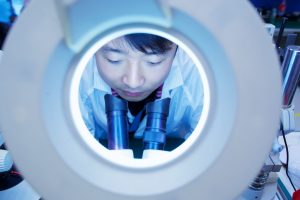In my role as CEO and Executive Director of ABET, I have the privilege of attending many conferences throughout the year, but the one I look forward to the most is the ABET Symposium, our flagship event for accreditation, assessment and the global exchange of best practices in STEM education.
Our annual event brings together 800+ passionate faculty members, students, industry leaders and government representatives to discuss how we can create a safer and more sustainable world through higher education. In light of recent events, we’ve decided to cancel the 2020 ABET Symposium: Data Impact, slated for March 31-April 1 in Nashville, Tennessee. This decision did not come lightly — it was a huge disappointment to speakers, registrants, board members and staff — but it was the right decision, in order to do our part to help contain the spread of the 2019 Novel Coronavirus (COVID-19).
As the global accreditor of college and university programs in applied and natural science, computing, engineering and engineering technology, it is our mission to ensure that graduates of ABET-accredited programs are prepared to enter a global workforce and take on the ever-growing challenges facing our planet. STEM graduates play a vital role in developing meaningful solutions to societal problems, such as the public health crisis we are currently facing. They also play a vital role in helping to achieve the UN Sustainable Development Goals (SDGs). SDG 3 — “Ensure healthy lives and promote well-being for all at all ages,” has never been more critical than it is today.
When we chose Data Impact as the theme of the 2020 ABET Symposium, we planned to explore the expanding influence that data has across the STEM fields and how it is reshaping the educational model and student experience. Data science is integral in creating a safe, secure and sustainable future.
Early on in the outbreak of the novel coronavirus, there was not enough data to make fully informed decisions. And while there’s still not enough data to say exactly how this will play out over the next few months, or even years, we, as a society, are in a much better place in dealing with this pandemic than we would have been just 10–20 years ago.
Many are comparing COVID-19 with the Spanish Flu of 1918, the global flu pandemic that killed an estimated 50 million people around the world. Luckily, we now live in a time where we have the resources available to do much more than we were able to do 100 years ago. Though technological advancements in transportation may have aided the rapid spread of the virus, they have also enabled us to share information and resources so that we can work together to contain COVID-19. Technology allowed China to build two hospital facilities for coronavirus patients in just 10 days. It allowed us to airdrop test kits onto cruise ships. And it allowed the Johns Hopkins Center for Systems Science and Engineering to build a coronavirus mapping tool. This dashboard has kept millions abreast of the latest data from the World Health Organization (WHO), the Centers for Disease Control and Prevention (CDC) and other sources, to visualize how the virus is spreading around the world.

In South Korea, the molecular biotech company Seegene started developing test kits before the country had even confirmed its first case of COVID-19. Now one of the most affected countries, its aggressive approach to testing and detecting patients early has been instrumental in reducing the disease’s devastating impact. An artificial intelligence-based big data system enabled Seegene to quickly develop a test for coronavirus and within weeks of the outbreak in Wuhan, China, there were four Korean companies manufacturing tests, enabling the country to test 10,000 people a day. As of last weekend, South Korea had tested more than 248,000 people and identified 8,086 cases. Thus far, they’ve had a fatality rate of 0.9 percent, much lower than other countries have experienced.
Science and education are critical in times such as these. The technology at our fingertips has allowed epidemiologists and experts around the world to connect, share data and better predict how quickly the disease will spread and how deadly it will become. It also allows everyday citizens to communicate and work remotely while adhering to social distancing recommendations from the CDC.
While the full impact of COVID-19 remains to be seen, the data we collect now will be used to help mitigate public health challenges in the future. In the meantime, I hope you all stay safe and well as we work together to contain this global pandemic.